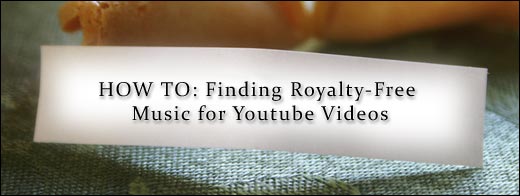
If you’ve been making videos for YouTube, you’re likely to have noticed that the background music is a thorny issue. Popular music from the RIAA labels and bigger indie labels is usually quickly identified and marked by YouTube.
The best case scenario, then, is that YouTube simply “lets you get away with it” and runs advertisements on the video, where the payments go straight to the record company. It’s a nice middle ground, but anyone hoping their video will “go viral” and make some money off of YouTube’s advertiser program are out of luck. It’s even more embarrassing if someone else is running advertisements on some sort of corporate video (a product tutorial, a game demo, a keynote address, etc.) hosted on YouTube.
The worst case scenario is that the entire audio of your video production is deleted or your video is taken down.
If you want to use popular music the legal way, there are a lot of hurdles to jump through. You need to purchase mechanical rights, public performance royalties, synchronization and transcription rights, publishing rights, neighboring rights, and master use rights. Just to get Blues Traveler’s “Crash & Burn” in your video of your four year old running into a wall.
The way that Hollywood has typically dealt with this problem is to pay “production music” libraries for their music. These libraries buy the copyrights to music on a work-to-hire basis and then license that music to the film and television companies for a fee that is typically cheaper than having music specifically commissioned for the video. The problem is that these fees can be cost-prohibitive for smaller production houses and the semi-pro/semi-amateur filmmakers that are likely to see YouTube as a primary distribution medium.

For example, some Creative Commons licenses prohibit use of the material in commercial works. In that case, if you’re planning on making any money off of the video – even in an advertising based model – you can’t use the song without coming to a separate license agreement with the author. There’s no guarantee that you’ll be able to contact the author, however, who can then choose to charge you for the song or choose not to license it at all.
Other creative commons works require “share-alike” provisions – that is, you can use the song in your project freely, but the work you use it in must be also shared under the same creative commons license. This will work well for some projects, not so well for others, like, for example, corporate videos.
Finally, some CC licenses prohibit derivative works – which precludes the use of that song as a background audio track.
So, with all the problems with music for video laid out, what can YouTube filmmakers use for their audio?
First is Incompetech, the brainchild of Kevin MacLeod. Incompetech has a large variety of royalty free music for use in film and video projects (like YouTube videos) that’s of a surprisingly good quality for the price. The only thing required is attribution, although there is a $5 suggested donation. For $0 budget videos, this is probably the best option.
Similarly, Dan-O at Danosongs.com has also released a number of songs, which are free for commercial or non-commercial projects with attribution. There is a pay-what-you-feel-is-fair donate button, however.
Another option, though more expensive, is the use of “crowdsourced” libraries for music. Though not free, music purchased through sites such as iStockPhoto.com or Envato libraries is relatively cheap. Primary Elements also offers production music at $3 per track for non-commercial projects and $9 per track for commercial ones.
One interesting option is Moby Gratis, a site set up by music composer and techno artist Moby, designed specifically to allow amateur filmmakers to use Moby’s music. Though limited to one sole author, and though there’s an application process, Moby Gratis still has a large array of very professional music from the composer of the Southland Tales soundtrack available for free to amateur and student filmmakers.
Finally, I’ve actually created some music with Apple GarageBand and Sony Acid that you can use, a GeeksAreSexy.net exclusive. Download them here. << For the link on the left, and only this link, here is the required information waiving all copyright and related or neighboring rights for Brian Boyko’s music.
To the extent possible under law,
Brian Boyko has waived all copyright and related or neighboring rights to
Royalty Free Music.
This work is published from: United States.
All of these options should have you end up with copyright-legal audio for your YouTube videos that won’t get hit with ads or taken down by YouTube.
[Header Picture Source: Flickr (CC)]

